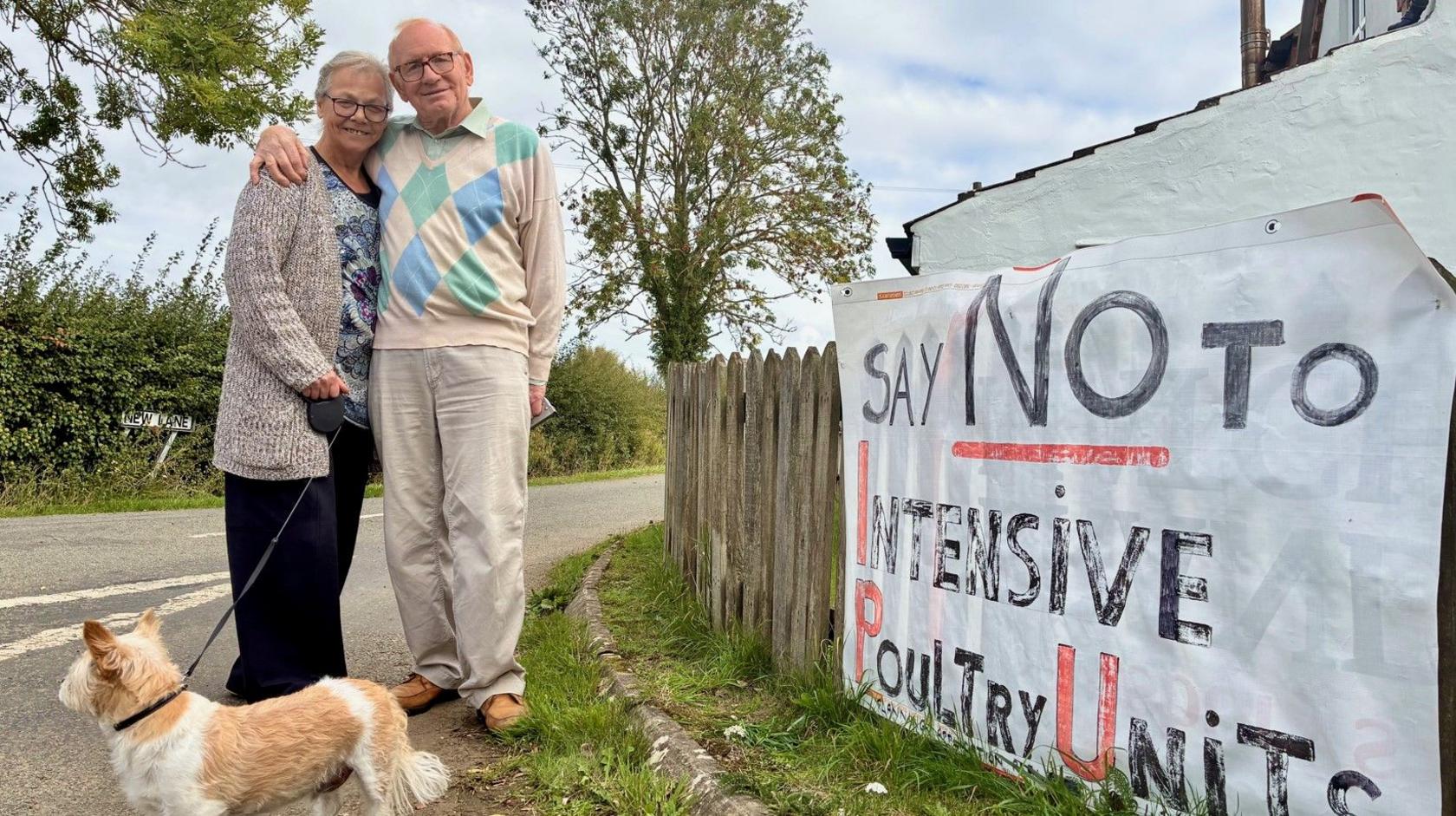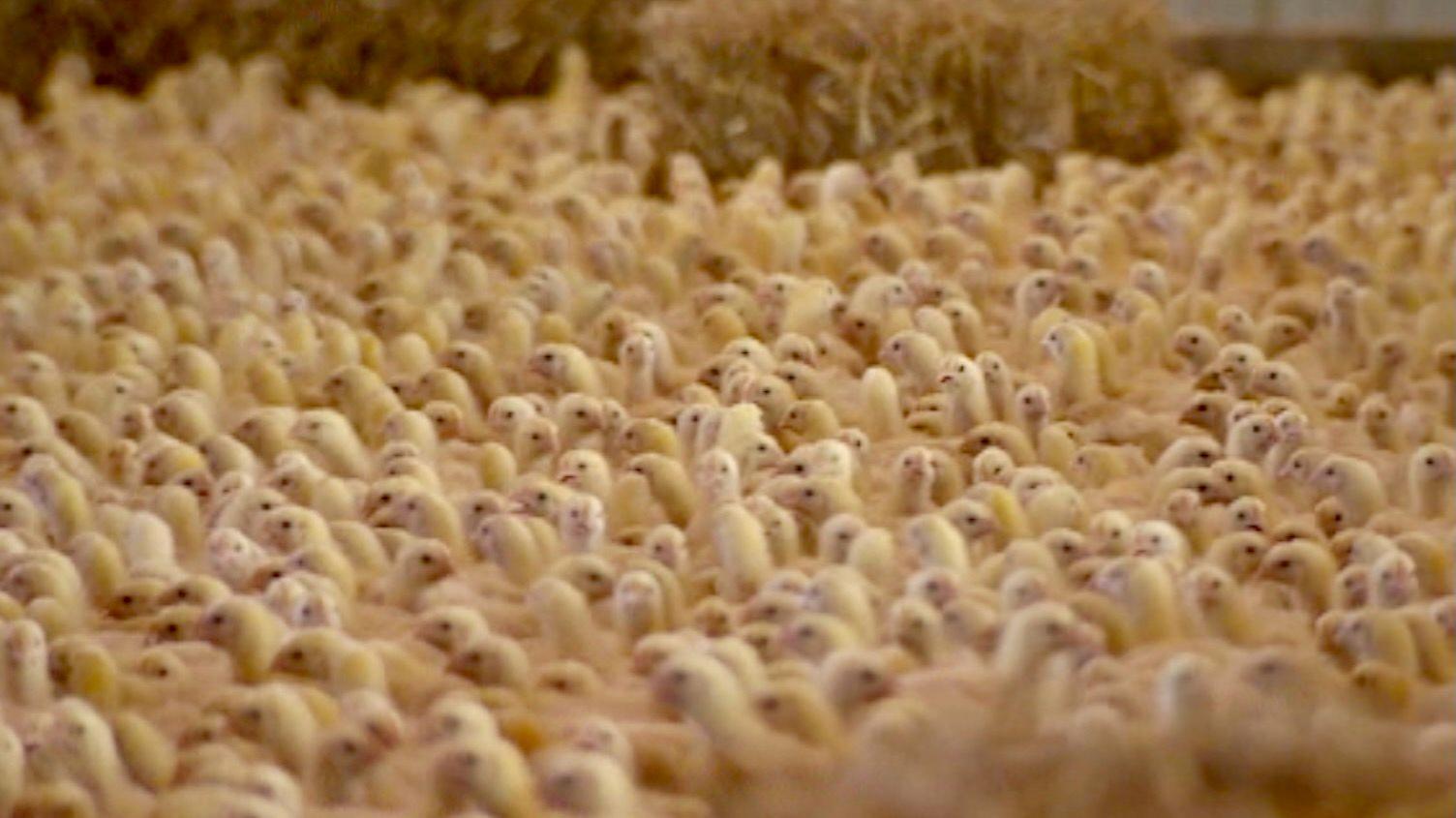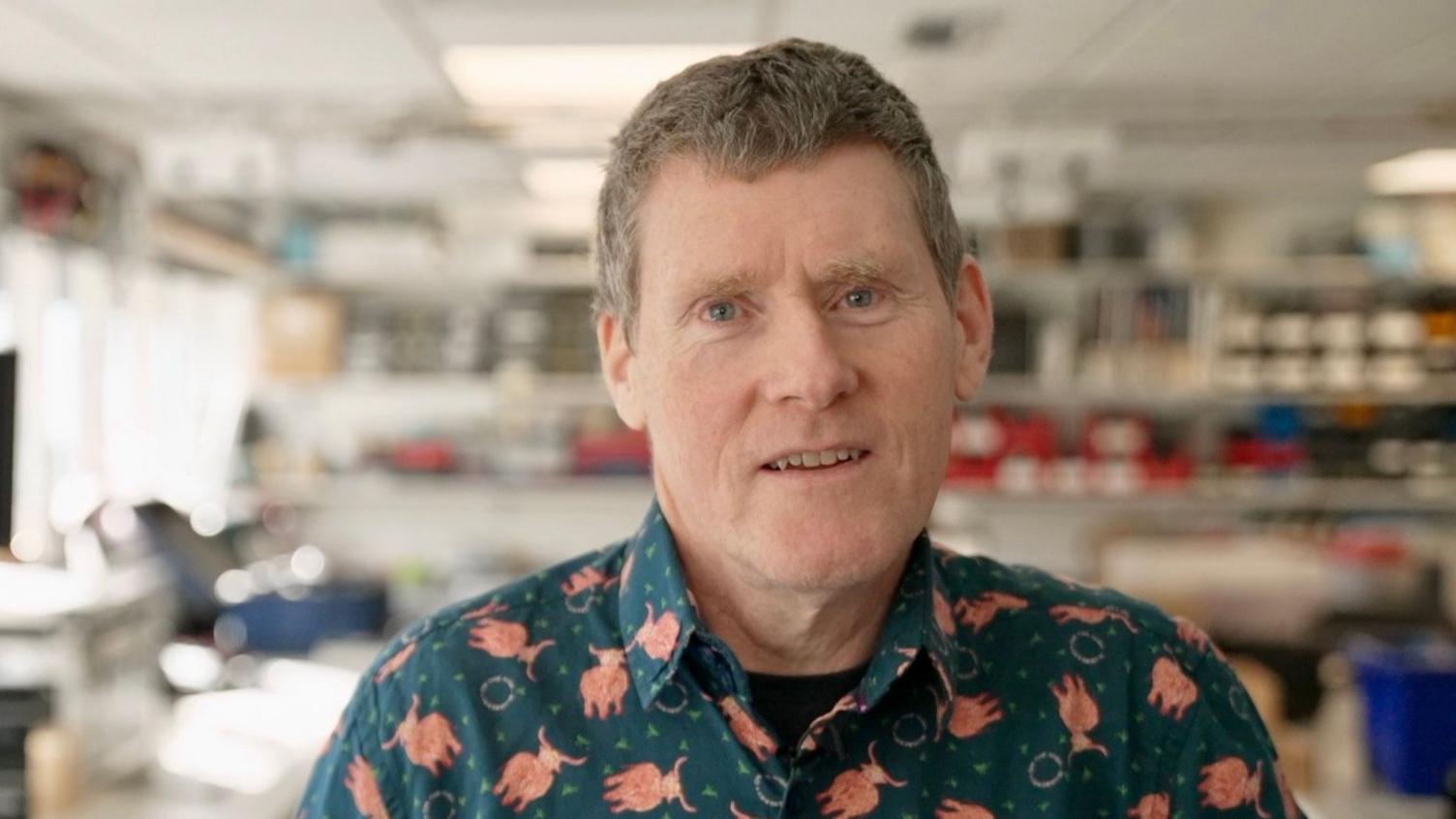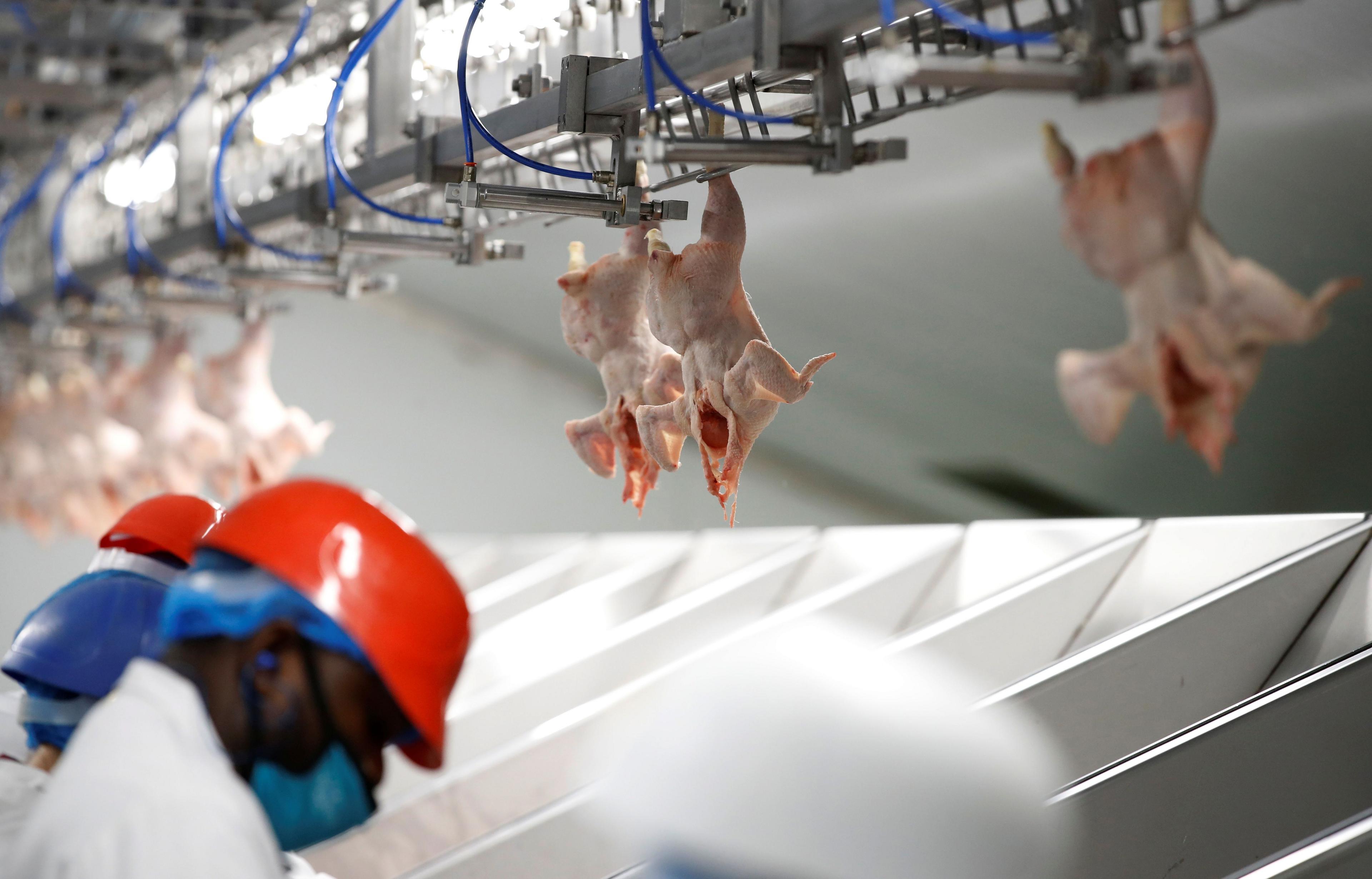Chicken farm will pollute 'like M25', says report

Maggie and Lyndon Brace say they are "worried sick" after reading the air quality assessment which was presented to them by an animal rights group
- Published
The air around a proposed chicken "factory farm" would be as polluted as that on the M25, an air quality expert has claimed.
Dr Michael Bull, who was paid by animal rights activists to produce his report, said fine particles, known as PM2.5, emitted from the farm would be of similar concentrations to those found on a 4.3 mile (7km) stretch of the M25 carrying 160,000 vehicles a day.
Some villagers have said they are "worried sick" about the health implications of the farm which could house 180,000 birds.
Planning agents for Grange Farm, in Toynton St Peter, said there would be "significant separation distance" between the farm and homes, which meant an air quality assessment was not needed.
Banners scattered around Toynton St Peter highlight the strength of feeling against the plans, which have been submitted to East Lindsey District Council.
Lyndon Brace, who has lived in the village for 44 years, said the proposal was "in the wrong place".
"It's an industrial unit. It should be on an industrial estate," he said. "We are worried sick."
There are 25 homes within 700 meters of the proposed poultry unit.
Mr Brace and his wife Maggie are members of the Toynton Action Group, which has formally opposed the planning application.
The report by Dr Bull was commissioned by the Coalition Against Factory Farming, which objects to all factory farms.
Dr Bull's experience on air quality matters has included advising bodies such as the Highways Agency, Transport Scotland, the Welsh Assembly and Defra.
He said emissions from poultry farms were "huge", but the risk to health was due to the miniscule nature of each particle.
"They can penetrate through the protection that your lungs have and actually enter into your body," Dr Bull said.

The proposed farm could raise 180,000 birds from day-old chicks for 38 days until their slaughter
Dr Bull said his report used Environment Agency estimates for the amount of dust generated by each chicken. He combined this with an estimated amount of ammonia the farm would produce, which the farmer's agent submitted as part of the planning application.
He said it is not possible to estimate how much PM2.5 will reach nearby villages, but that it is "undeniable that villagers will see an increase in concentration of PM2.5."
According to the World Health Organisation, PM2.5 is "linked with" strokes, heart diseases, lung cancer and acute and chronic respiratory diseases.
Villager Alison Musson said she joined the campaign group because of the health warnings.
"We came to the countryside for the clean air," said Ms Musson. "We may as well have stayed in the town where we were."
PM2.5 is also generated from many other sources, including traffic, aviation, industrial processes and burning fuel in the home.

Dr Jim McQuaid says the impact on villagers' health will depend on other pollution that they breathe in and their general health
The BBC presented Dr Bull's report to independent scientific experts to scrutinise its claims.
Dr Jim McQuaid, an atmospheric scientist from the University of Leeds, said it was "reasonable" to compare the estimated emissions to those produced on a stretch of the M25.
Speaking at the university's Earth and Environment Centre, he said, "You are basically putting poisons, toxic materials, into the blood stream."
"That can never have a good outcome".
However, Dr McQuaid said the exact health risk of this specific poultry unit would depend on "everything else that they [the villagers] are breathing in".
An additional claim in Dr Bull's report is that the increase in PM2.5 for nearby villages would be greater than the estimated increase generated by Gatwick's Northern Runway development.
However, Prof Alastair Lewis, from the National Centre for Atmospheric Science, told the BBC that claim was "a little spurious since modern aviation isn't actually a particularly large source of PM2.5".
Prof Lewis said the amount of "PM pollution from a single location is significant". However, he also pointed out that the increase would be classed as "slight", based on some industry guidance.

As a relatively low-cost high protein meat, chicken is popular with UK consumers
The Environment Agency said it was "working to reduce pollution from agriculture and regulate intensive farms".
The district council said it was unable to comment due to this being an "undetermined" planning application, but would consider all information submitted.
Should the application be approved, it would become the 857th poultry farm in Lincolnshire.
At present, there are 856 poultry units in the county, raising 37.5 million birds, according to figures provided by Defra under a Freedom of Information request by the BBC.
Chicken accounts for around half of all meat eaten in the UK, according to the National Farmers Union (NFU).
Boston farmer Simon Gadd, South Lincolnshire NFU chair, said: "Poultry farmers in Lincolnshire and across the country take great pride in producing safe, affordable and traceable food to some of the highest standards in the world.
The organisation said that British farmers reared one billion chickens for meat every year, which contributed more than £4.6bn to the UK economy.
Listen to highlights from Lincolnshire on BBC Sounds, watch the latest episode of Look North or tell us about a story you think we should be covering here, external.
Download the BBC News app from the App Store, external for iPhone and iPad or Google Play, external for Android devices